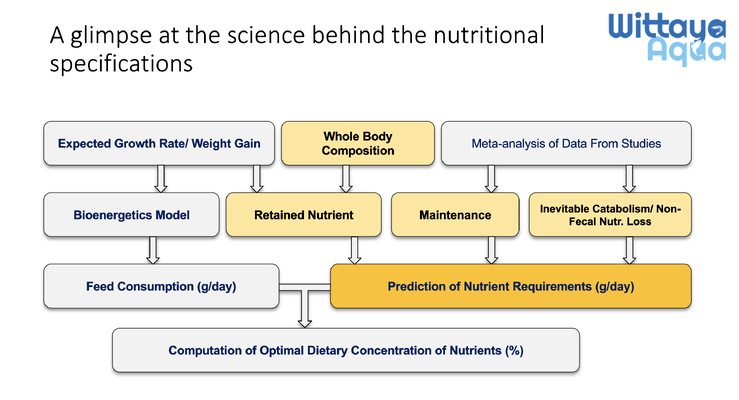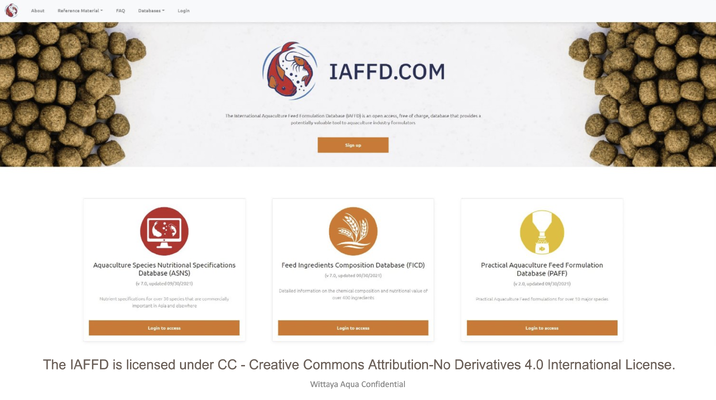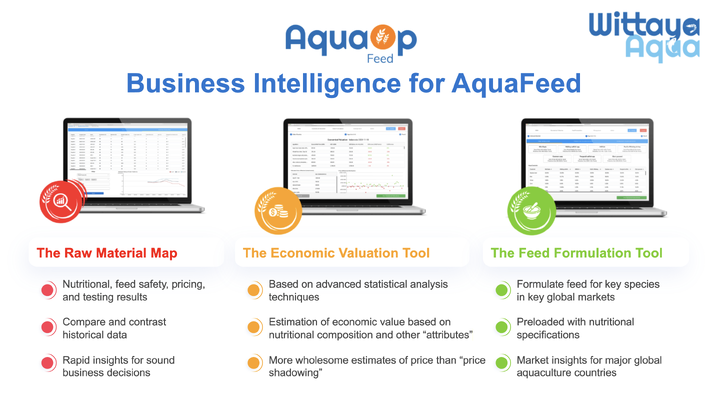What makes a good aquafeed?
May 01
Article by Ken Dirst
What makes a good aquafeed? If you do not know the answer to this question, you may not be able to produce profitably nor overcome disease or other challenges.
You probably have a unique perspective depending on whether you make and sell feed, use feed to produce shrimp or fish, or supply ingredients to make feed. Even though each of these players looks at aquafeeds in a different way, there are key points that should be considered when making a superior quality feed.
Feed makes up the bulk of costs in most aquaculture farms. This makes sense because quality feed is required to grow healthy animals. Therefore, both feed mills and farmers are concerned about the nutritional and physical characteristics of their feeds: are they complete and balanced? Are they appropriate for the species and production system? Are they free of harmful substances? Do the cost and availability work with my operational and financial goals?
At the end of the day, a good feed is profitable for both the supplier and the farmer. From the perspective of a farmer, it is often the case that blame will be placed on the feed when suboptimal results are obtained. There may even be a suspicion that somehow the feed company is “out to get the farmer” in its’ quest for more profits. This, even while objectively knowing that there are many internal and external factors that contribute to success or failure in production. Of course, both the feed mill company and the farm depend on each other for their very existence.
To state the obvious: feeds are composed of several types of feed ingredients. Each ingredient will have its own benefits (required nutritional characteristics, reasonable cost, constant availability), downsides (variable cost or supply, inconsistent quality, negative effect on the manufacturing process), and risks (toxic substances or anti-nutritional factors, consumer food safety issues).
In a recent workshop given by Wittaya Aqua in Singapore, Dr. Dominique Bureau (CSO and co-founder of Wittaya Aqua) presented to a group of aquaculture researchers and farmers on the science behind aquaculture nutrition: Dr. Bureau started by reminding the group that while aquaculture requires many types of feeds for many different species and life stages, at the end of the day “from a nutritional perspective, we are all remarkably similar. We all come from Planet Earth. We all have the same basic metabolism, and therefore we all require the same building blocks or the same kind of fuel source.”
Figure 1: Image: The Science behind Nutritional Specifications (Slide 31 in Workshop presentation)

Dr. Bureau went on to highlight the nutrients that are required by all fish and shrimp: the ten essential amino acids, essential fatty acids (omega 3 and omega 6), vitamins and minerals. And of course, the poor growth and health that will result if these nutrients are not provided to the target species. In other words, a good feed must supply the proper nutritional profile. The key is to find a balance between nutritionally optimal (expensive) feed and one that really works for the farmer in his production system.
Much research has been done in the field of aquaculture nutrition, and many species such as trout, carp, tilapia, and salmon are backed by an extensive knowledge of their nutrient requirements. However, unlike land animal husbandry, aquaculture is characterized by an incredible variety of fish and shrimp, and for many species (particularly high value marine species), there can be many gaps in the knowledge required to have a truly complete and balanced feed. If you contemplate the differences in production systems (is natural productivity supplying some nutrients?) and life stages (much of the research is done with juvenile fish), the challenge becomes apparent.
Figure 2: Image: IAFFD.COM (Slide 45 in Workshop presentation)

Dr. Bureau has participated for more than three decades in nutrition research and has played a key role in developing databases that compile the information needed to formulate feeds to meet the animals’ requirements. This information is in the freely accessible International Aquaculture Feed Formulation Database (IAFFD) and includes the Aquaculture Species Nutrient Specifications (ASNS) and the Feed Ingredient Composition Database (FICD).
Figure 3: Image: Business Intelligence for AquaFeed (Slide 55 in Workshop presentation)

Wittaya Aqua’s software platform is a plug-and-play application that combines the continually updated information from these databases with industry-leading insights, ingredient pricing, and sustainability metrics. Are you a farmer attempting to negotiate with your supplier for more economical feed solutions? Are you a feed company looking to improve customer service overall, grow into new markets, create new products, and get more market share? Do you supply ingredients and want to see how your product stacks up against the several hundred other ingredients that aquafeed presently uses? Then we would love to hear from you!
For more information on how to subscribe, and to find out how our platform and tailored technical solutions can help your business succeed… Talk to us now!
Talk to our Team